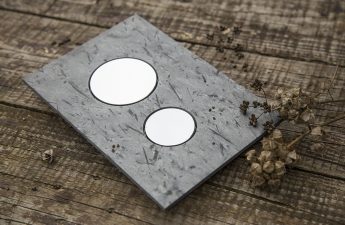In this article we will talk about such in detaildetails such as inserts, borders, panels, baseboards, rosettes, corners and joints in ceramic tile collections It is rare to see an apartment whose interior is not decorated with ceramic tiles. Perhaps, this is the most frequently used finishing material, which is chosen due to its durability, practicality and decorativeness. Most often, tiles are used to decorate bathrooms, toilets, hallways and, of course, kitchens. But the apparent monotony of this material is deceptive: it is enough to use tiles of different tones, combine vertical stripes with horizontal ones - and the surface will sparkle, give the strict lines of a standard room an unusual look. A decorative panel of tiles with various elements and patterns perfectly zones the space around the sink, stove or above the work surface of the cutting table.
Insert tiles, borders, rosettes
The insert is a tile of the samethe same size as the main one, but only complemented by a pattern or texture. The type of pattern depends on the room for which the tile is intended: in the kitchen, images of fruits, vegetables and houses are most appropriate, in the bathroom - fish, shells and other prints from the marine theme. Relief inserts can complement the floor pattern, and smooth ones - used for wall laying. Sometimes a small hook or shelf can be mounted on them - such a solution will be relevant for the kitchen or bathroom. Inserts are placed pointwise or in a group - depending on the design plan.
A border connects, separates or emphasizes
A border, or frieze, completes the composition.It has a rectangular shape and is usually located on top of the main panel. But you can place it at the bottom or in the middle - it's a matter of taste and fantasy. You can also lay the frieze vertically - then it will visually separate one thematic or color group from another within one panel.
 The pencil border complements the frieze orcontrasts with it. Used when laying floor tiles, it usually highlights the central part or emphasizes the general background. Often, craftsmen use two types of background tiles, while inside the perimeter they make diagonal laying, and outside it the tiles are mounted in the usual way, which creates the effect of a "ceramic carpet". For a freesize panel, tiles of different sizes are used, and by alternating them in one order or another, they create the effect of a strict decor flowing into a chaotic blur. Floor tiles are also often complemented by an insert - a rosette, which is a round or oval panel built into the main composition.
The pencil border complements the frieze orcontrasts with it. Used when laying floor tiles, it usually highlights the central part or emphasizes the general background. Often, craftsmen use two types of background tiles, while inside the perimeter they make diagonal laying, and outside it the tiles are mounted in the usual way, which creates the effect of a "ceramic carpet". For a freesize panel, tiles of different sizes are used, and by alternating them in one order or another, they create the effect of a strict decor flowing into a chaotic blur. Floor tiles are also often complemented by an insert - a rosette, which is a round or oval panel built into the main composition.

The plinth will align and decorate the panel
In wall tile panels, the skirting board performsdecorative function (while its shape, color and even texture can be anything). It can also separate parts of the panel, visually lengthen the walls. But keep in mind that it is better not to cut the plinth into parts: the more relief it is, the greater the risk of chips appearing on it under mechanical impact. Semicircular or relief elements are suitable for decorating corners. And any of the above elements are quite suitable for framing a mirror in the bathroom. Provided that this mirror is not round.

